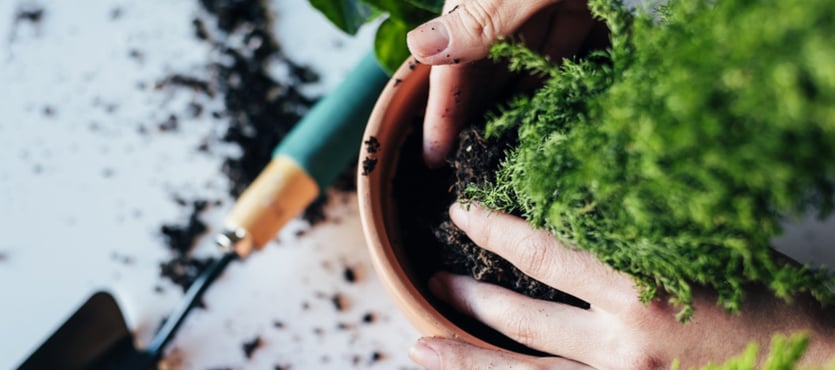Now it time to begin planning for transplanting of potted plants. Transplanting is simply moving a healthy plant to a new container for any number of reasons. You may need to transplant because of your plant needs more space due to growth. You might transplant new plants from their flimsy nursery containers to your own quality containers. Because the process of transplanting plants is not a natural one, it must be done with care to avoid stress or harm to the plant being moved. TerraCast Products knows plants and planters and offers these tips for transplanting your potted plants safely so they continue to thrive.
The Big Concern – Root Shock
The biggest concern when transplanting your potted plants is avoiding root shock also known as transplant shock. Every transplanted plant suffers from shock, be it mild or severe. With mild transplant shock, the plants growth will slow, but with severe root shock the plant can die. The tiny tips of the roots are crucial to the plant so the during transplanting is to protect them so they can continue to provide the plant with the water and nutrients needed to thrive. These feeder roots are delicate, but fundamental to the healthy growth of the plant. When transplanting, be sure these roots aren’t cut off and don’t dry out during the transplanting process. A change of location can also increase transplant shock so try to keep sun exposure and moisture levels the same when moving your plant to a new location.
Transplanting Correctly for the Health of Your Plant
Since transplanting doesn’t occur in nature, as plants remain in the same location for the length of their lives, it requires care to keep your plant healthy during the process. The first step for plant health is placing your plant in a location in which it can thrive. One you determine the location; you’ll want to fill your planter with the proper soil for your plant. Now, you are ready to remove the plant form the existing container. Loosen the plant by digging around the edges of the existing planter and remove the plant with the soil around the roots intact. Doing so will protect the roots and avoid transplant shock. Once the plant is in its new planter, pack the soil around it firmly. Keep in mind that transplanting is best done while plants are dormant before buds appear in the early spring or after buds have fallen off in the late fall.
When purchasing new plants at your local nursery or home store, be sure the plants are not already suffering from root shock. The plants you choose should have been in their container for a full growing season to ensure healthy roots. Plants which have been recently transplanted will not thrive as they are already in shock and will suffer further shock when you transplant them a second time. When you purchase plants, you can test the health of the roots by ensuring they are firmly embedded in the surrounding soil.
Many people believe they need to aid plant growth after transplantation by adding a root booster. It is most often done for larger transplants like trees and shrubs. The truth is giving your plants a root booster can actually harm the plant, especially if the roots have been shocked or otherwise damaged. The root booster will promote plant growth, but the roots may not be healthy enough to support the growth.
Thinking about pruning your new transplant. Don’t. Research doesn’t support the myth that pruning newly transplanted plants helps the roots. In fact, pruning may harm the plant causing it to experience more stress.
Remember, transplanting your plants into the right container can help them to thrive, but the first year after transplanting is crucial for plant health. Be sure to provide your newly transplanted plant with the needed attention to help them overcome transplant stress and flourish.

